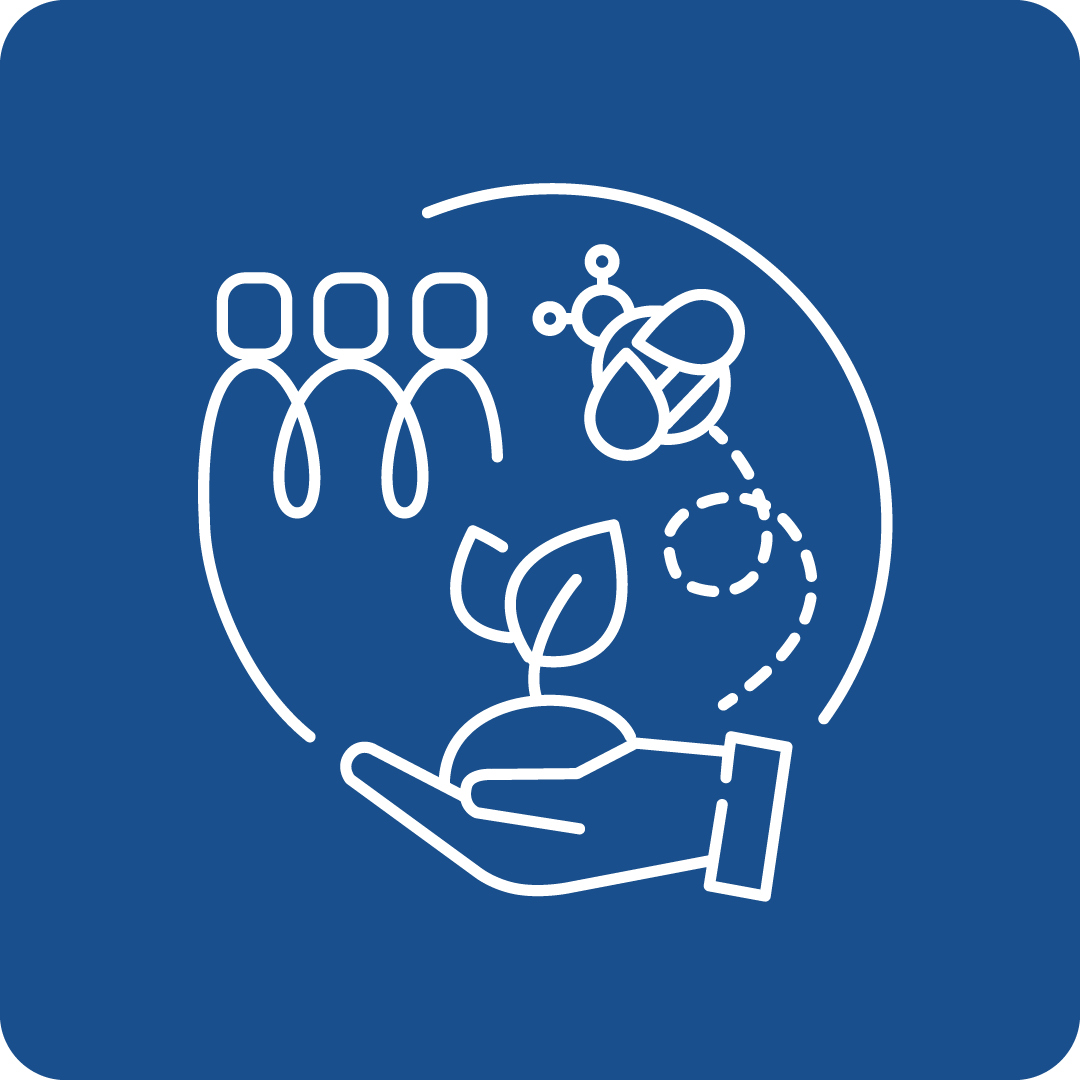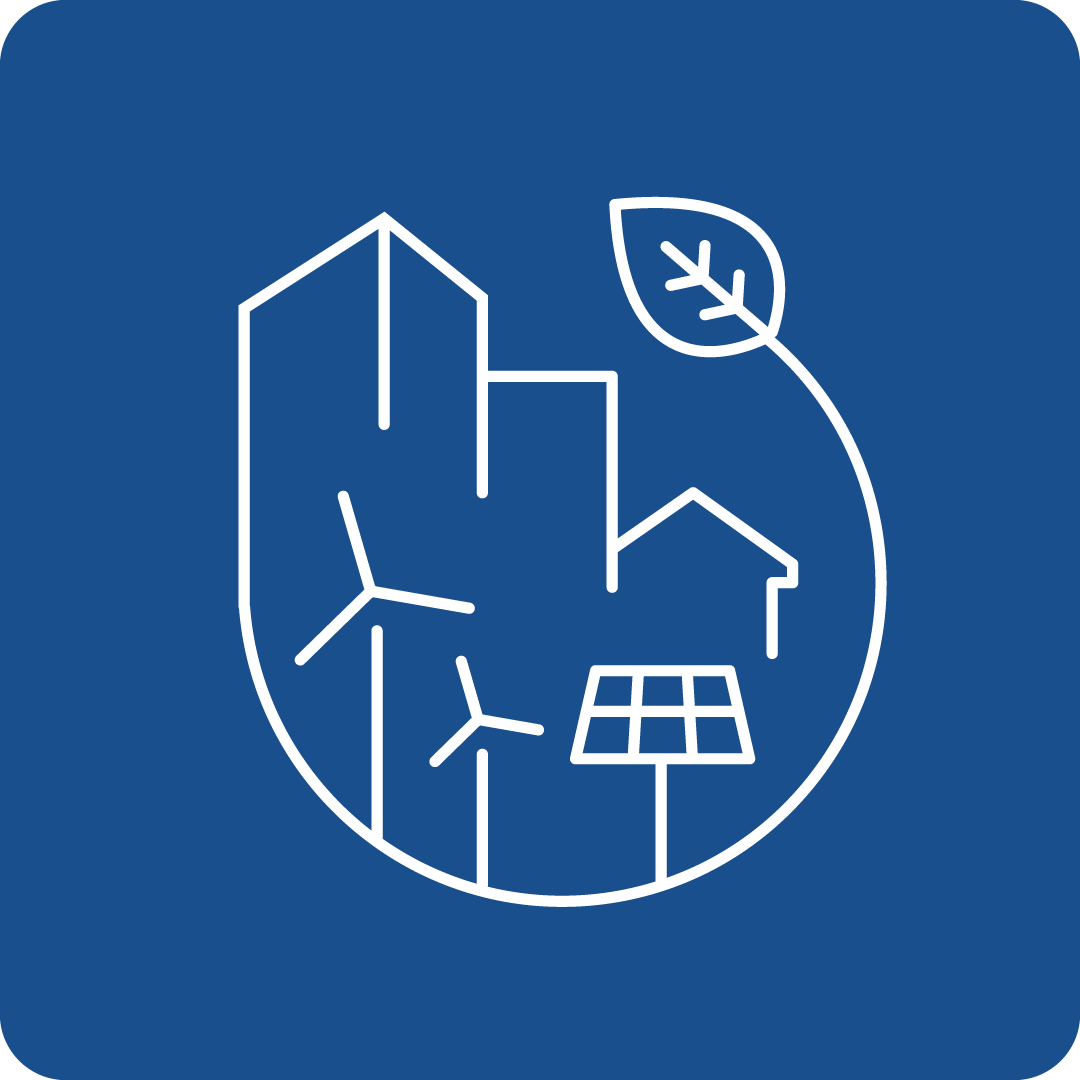Filter Search for grants
Call Navigation
Deadline expired
The deadline for this call has expired.
Call key data
Novel holistic intelligent tools for variable retrofit and decarbonised scenarios (ZEWT Partnership)
Funding Program
Horizon Europe: Cluster 5 - Climate, Energy and Mobility
Call number
HORIZON-CL5-2025-04-D5-13
deadlines
Opening
06.05.2025
Deadline
04.09.2025 17:00
Funding rate
70%
Call budget
€ 4,000,000.00
Estimated EU contribution per project
€ 4,000,000.00
Link to the call
Link to the submission
Call content
short description
In the quest to get energy reductions from retrofitting, new design requirements and constraints are emerging, e.g., due to the introduction of new low-carbon fuels, and new added propulsion systems (e.g., wind assisted systems). Furthermore, other technical measures are not yet “standardised” for retrofitting existing ships, due to other difficulties or high costs.
Call objectives
There is also a lack of design/retrofitting experience in applying these new solutions. A practical example is the space rearrangement in the electrification of the ship, including the installation of heavy battery sets, a solution that uses space: but changing ship’s volume and weight distribution along the beam might have a strong effect on the dynamic stability of the vessel.
The realisation of ad-hoc web tools and guidelines to help with the retrofit task is currently under development, based on the limited number of new small-scale demonstrators within ongoing projects (e.g., Green Marine, RETROFIT55, etc.).
These approaches combine mature and new technologies creating a decision-support system (DSS) that integrates these solutions. However, even if the final results have not been delivered yet, these projects are considering the retrofit problem in a silo-based mode, that is not including a full multidisciplinary design optimisation with the mutual interactions among the technologies. This might lead to difficulties in achieving overall optimal goals, therefore resulting in a limited impact on the transition to zero-emission waterborne. These simplified strategies are indeed not accounting, in a full coupled mode, for the interferences and mutual influences among the different retrofit systems installed on board (i.e. available space and payload, safety constraints, electrical constraints, etc.): in other terms, they are not considering the global problem of retrofitting in a holistic way, which is a major objective of this call. Also, the holistic intelligent tools could explore possibilities for modular or serial solutions which reduce costs of retrofitting.
Furthermore, in the short and medium term we are and will be observing multiple ongoing regulatory processes (by IMO, EU, UNFCCC, ES-TRIN) developing frameworks and standards that will shape waterborne transport in the next decades. This further element of variability, i.e. the uncertainty in decarbonisation ambitions as well as on the variability in cost and availability of carbon-neutral fuels, not considered yet in the current approaches, claim for a large effort for new holistic retrofit intelligent design tools for exploring multidisciplinary solutions in variable decarbonisation scenarios.
Innovative holistic intelligent design tools, with a multi-objective strategy and AI simulators, have to be developed rapidly and tested if we want to significantly contribute to the transition to zero-emission waterborne transport, and this has to be done by integrating the many sectors involved in the design.
read more
Expected effects and impacts
Proposals are expected to address all the following aspects:
- The development of a novel intelligent design digital tool which can fully integrate decarbonising concepts (e.g., alternative fuel propulsion systems, auxiliary propulsion systems, renewable energy sources, etc.) and can be used for retrofit concepts;
- The design digital tool should have the capability of considering together multiple decarbonisation solutions for operating vessels, accounting for reciprocal influences, and be able to integrate existing loading instrument (software or data package) for stability, weight and hull strength control;
- Retrofit configurations might include changes in operational modes (e.g., slow steaming, weather routing, etc.) which should also be evaluated against human and organisational risk factors introduced;
- The design tool should also include a life-cycle perspective from design to scrapping;
- Preliminary (intermediate) validation of the design tool by testing at model scale original versus refitted ship solution, also assessing the environmental impact of the solutions, including on biodiversity, air quality and aerial and underwater noise;
- Final demonstration, applying the tool in six virtual demonstrations, one for each one of the six ship types detailed in the Strategic Research and Innovation Agenda of the Zero-Emission Waterborne Transport Partnership, considering together multiple decarbonisation solutions and producing final optimised refitted designs to be tested in operational environment conditions with a given operational profile. Participation of ship owners and operators to these virtual demonstrations should be ensured to pave the way to further market deployment of the solution and real retrofitting operations.
This topic implements the co-programmed European Partnership on ‘Zero Emission Waterborne Transport’ (ZEWT). As such, projects resulting from this topic will be expected to report on results to the European Partnership ‘Zero Emission Waterborne Transport’ (ZEWT) in support of the monitoring of its KPIs.
read more
Expected results
Project results are expected to contribute to all the following expected outcomes:
- Novel holistic intelligent tools for variable retrofit scenarios and new operational modes will be developed and then demonstrated by the application to a retrofit ship test case;
- Measures to overcome the limitations of current generation of design tools will be proposed which currently do not account for the interferences and mutual influences among the various retrofit systems installed on board;
- Contribution to the retrofitting of existing aging fleets in the EU;
- Increased competitiveness of European shipyards, marine equipment providers and repair yards in the maritime green technology sector through the development of cost-effective solutions, that support ship-owners in making the European fleet climate neutral and still competitive;
- Accelerated regulatory approval processes, best practice guidance, and easy-to-customise strategies for retrofitting by reducing the commercial risk of deployment for ship owners.
read more
Eligibility Criteria
Regions / countries for funding
Moldova (Moldova), Albania (Shqipëria), Armenia (Հայաստան), Bosnia and Herzegovina (Bosna i Hercegovina / Босна и Херцеговина), Canada, Faeroes (Føroyar / Færøerne), Georgia (საქართველო), Iceland (Ísland), Israel (ישראל / إِسْرَائِيل), Kosovo (Kosova/Kosovë / Косово), Montenegro (Црна Гора), New Zealand (Aotearoa), North Macedonia (Северна Македонија), Norway (Norge), Serbia (Srbija/Сpбија), Tunisia (تونس /Tūnis), Türkiye, Ukraine (Україна), United Kingdom
eligible entities
EU Body, Education and training institution, Non-Profit Organisation (NPO) / Non-Governmental Organisation (NGO), Other, Private institution, incl. private company (private for profit), Public Body (national, regional and local; incl. EGTCs), Research Institution incl. University, Small and medium-sized enterprise (SME)
Mandatory partnership
Yes
Project Partnership
To be eligible for funding, applicants must be established in one of the following countries:
- the Member States of the European Union, including their outermost regions
- the Overseas Countries and Territories (OCTs) linked to the Member States
- countries associated to Horizon Europe - see list of particpating countries
Only legal entities forming a consortium are eligible to participate in actions provided that the consortium includes, as beneficiaries, three legal entities independent from each other and each established in a different country as follows:
- at least one independent legal entity established in a Member State; and
- at least two other independent legal entities, each established in different Member States or Associated Countries.
Any legal entity, regardless of its place of establishment, including legal entities from non-associated third countries or international organisations (including international European research organisations) is eligible to participate (whether it is eligible for funding or not), provided that the conditions laid down in the Horizon Europe Regulation have been met, along with any other conditions laid down in the specific call topic.
A ‘legal entity’ means any natural or legal person created and recognised as such under national law, EU law or international law, which has legal personality and which may, acting in its own name, exercise rights and be subject to obligations, or an entity without legal personality.
other eligibility criteria
Specific cases:
- Affiliated entities (i.e. entities with a legal or capital link to a beneficiary which participate in the action with similar rights and obligations to the beneficiaries, but which do not sign the grant agreement and therefore do not become beneficiaries themselves) are allowed, if they are eligible for participation and funding.
- Associated partners (i.e. entities which participate in the action without signing the grant agreement, and without the right to charge costs or claim contributions) are allowed, subject to any conditions regarding associated partners set out in the specific call conditions.
- Entities which do not have legal personality under their national law may exceptionally participate, provided that their representatives have the capacity to undertake legal obligations on their behalf, and offer guarantees to protect the EU’s financial interests equivalent to those offered by legal persons.
- Legal entities created under EU law (EU bodies) including decentralised agencies may be part of the consortium, unless provided for otherwise in their basic act.
- International European research organisations are eligible to receive funding. International organisations with headquarters in a Member State or Associated Country are eligible to receive funding for ‘Training and mobility’ actions or when provided for in the specific call/topic conditions. Other international organisations are not eligible to receive funding, unless provided for in the specific call/topic conditions, or if their participation is considered essential for implementing the action by the granting authority.
- Joint Research Centre (JRC)— Where provided for in the specific call conditions, applicants may include in their proposals the possible contribution of the JRC but the JRC will not participate in the preparation and submission of the proposal. Applicants will indicate the contribution that the JRC could bring to the project based on the scope of the topic text. After the evaluation process, the JRC and the consortium selected for funding may come to an agreement on the specific terms of the participation of the JRC. If an agreement is found, the JRC may accede to the grant agreement as beneficiary requesting zero funding or participate as an associated partner, and would accede to the consortium as a member.
- Associations and interest groupings — Entities composed of members (e.g. European research infrastructure consortia (ERICs)) may participate as ‘sole beneficiaries’ or ‘beneficiaries without legal personality’. However, if the action is in practice implemented by the individual members, those members should also participate (either as beneficiaries or as affiliated entities, otherwise their costs will NOT be eligible.
- EU restrictive measures — Entities subject to EU restrictive measures under Article 29 of the Treaty on the European Union (TEU) and Article 215 of the Treaty on the Functioning of the EU (TFEU) as well as Article 75 TFEU, are not eligible to participate in any capacity, including as beneficiaries, affiliated entities, associated partners, third parties giving in-kind contributions, subcontractors or recipients of financial support to third parties (if any).
- Legal entities established in Russia, Belarus, or in non-government controlled territories of Ukraine — Given the illegal invasion of Ukraine by Russia and the involvement of Belarus, there is currently no appropriate context allowing the implementation of the actions foreseen in this programme with legal entities established in Russia, Belarus, or in non-government controlled territories of Ukraine. Therefore, even where such entities are not subject to EU restrictive measures, such legal entities are not eligible to participate in any capacity. This includes participation as beneficiaries, affiliated entities, associated partners, third parties giving in-kind contributions, subcontractors or recipients of financial support to third parties (if any). Exceptions may be granted on a case-by-case basis for justified reasons.
With specific regard to measures addressed to Russia, following the adoption of the Council Regulation (EU) 2024/1745 of 24 June 2024 (amending Council Regulation (EU) No 833/2014 of 31 July 2014) concerning restrictive measures in view of Russia’s actions destabilising the situation in Ukraine, legal entities established outside Russia but whose proprietary rights are directly or indirectly owned for more than 50% by a legal person, entity or body established in Russia are also not eligible to participate in any capacity. - Measures for the protection of the Union budget against breaches of the principles of the rule of law in Hungary — Following the Council Implementing Decision (EU) 2022/2506, as of 16 December 2022, no legal commitments can be entered into with Hungarian public interest trusts established under the Hungarian Act IX of 2021 or any entity they maintain. Affected entities may continue to apply to calls for proposals and can participate without receiving EU funding, as associated partners, if allowed by the call conditions. However, as long as the Council measures are not lifted, such entities are not eligible to participate in any funded role (beneficiaries, affiliated entities, subcontractors, recipients of financial support to third parties, etc.).In case of multi-beneficiary grant calls, applicants will be invited to remove or replace that entity in any funded role and/or to change its status into associated partner. Tasks and budget may be redistributed accordingly.
Additional information
Topics
Relevance for EU Macro-Region
EUSAIR - EU Strategy for the Adriatic and Ionian Region, EUSALP - EU Strategy for the Alpine Space, EUSBSR - EU Strategy for the Baltic Sea Region, EUSDR - EU Strategy for the Danube Region
UN Sustainable Development Goals (UN-SDGs)
![]()
![]()
![]()
Additional Information
Applications must be submitted electronically via the Funders & Tenders Portal electronic submission system (accessible via the topic page in the Search Funding & Tenders section). Paper submissions are NOT possible.
Applications must be submitted using the forms provided inside the electronic submission system (not the templates available on the topic page, which are only for information). The structure and presentation must correspond to the instructions given in the forms.
Applications must be complete and contain all parts and mandatory annexes and supporting documents.
The application form will have two parts:
- Part A (to be filled in directly online) contains administrative information about the applicant organisations (future coordinator and beneficiaries and affiliated entities), the summarised budget for the proposal and call-specific questions;
- Part B (to be downloaded from the Portal submission system, completed and then assembled and re-uploaded as a PDF in the system) contains the technical description of the project.
Annexes and supporting documents will be directly available in the submission system and must be uploaded as PDF files (or other formats allowed by the system).
The limit for a full application (Part B) is 50 pages.
Eligible costs will take the form of a lump sum as defined in the Decision of 7 July 2021 authorising the use of lump sum contributions under the Horizon Europe Programme – the Framework Programme for Research and Innovation (2021-2027) – and in actions under the Research and Training Programme of the European Atomic Energy Community (2021-2025). It is mandatory to submit a detailed budget table using the template available in the Submission system.
Activities are expected to achieve TRL 7-8 by the end of the project.
Call documents
Horizon Europe Work Programme 2025 Cluster 5 - Climate, Energy and MobilityHorizon Europe Work Programme 2025 Cluster 5 - Climate, Energy and Mobility(2548kB)
Contact
To see more information about this call, you can register for free here
or log in with an existing account.
Log in
Register now


